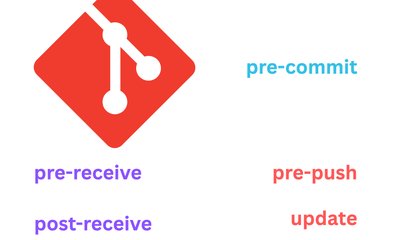Gitフック:Gitワークフローの自動化
By admin, at: 2023年9月9日18:40
Estimated Reading Time: __READING_TIME__ minutes


Gitという分散型バージョン管理システムは、開発者が効率的にコードを管理できるようにします。Gitは多くの強力な機能を提供していますが、その隠れた英雄の一つがGitフックです。Gitフックは、Gitワークフローの特定のポイントで実行できるスクリプトであり、タスクを自動化し、コードの品質維持に役立ちます。この記事では、Gitフックの世界を深く掘り下げ、使用方法とカスタマイズ方法、そしてGitプロセスを最適化するための重要性について説明します。
Gitフックの概要
Gitフックは、リポジトリで特定のイベントが発生したときにGitが自動的に実行する、小さくカスタマイズ可能なスクリプトです。これらのスクリプトは非常に多用途で、さまざまなタスクの自動化、プロジェクト固有のポリシーの適用、Gitと外部ツールの統合が可能になります。それらはゲートキーパーとして機能し、開発サイクル全体を通してコードの品質と一貫性を確保します。
Gitフックの種類
Gitは、ワークフローの特定のポイントで実行されるように設計されたさまざまなフックを提供します。以下は、一般的なGitフックの種類とそれぞれのサンプルコードです。
pre-commitフック
pre-commitフックは、新しいコミットを作成する直前に実行されます。コーディング標準を適用したり、単体テストを実行したり、その他のチェックを実行して、不良コードのコミットを防ぐのに最適な機会です。
pre-commitフックのサンプルコード(.git/hooks/pre-commit):
#!/bin/bash
# 例:コミット前にPython flake8を実行
flake8 manage.py
if [ $? -ne 0 ]; then
echo "Flake8が失敗しました。コミットする前に問題を修正してください。"
exit 1
fi
pre-receiveフック
pre-receiveフックは、サーバーがプッシュされたブランチを受け入れる直前にサーバー上で実行されます。これは、有効なコードのみがリポジトリにプッシュされるように、サーバー側のチェックとポリシーを設定するのに役立ちます。
pre-receiveフックのサンプルコード(サーバー側):
#!/bin/bash
# 例:ブランチ命名規則を適用
while read oldrev newrev refname; do
branch=$(git rev-parse --symbolic --abbrev-ref $refname)
if [[ ! $branch =~ ^feature/ ]]; then
echo "ブランチ名は「feature/」で始める必要があります。"
exit 1
fi
done
post-receiveフック
post-receiveフックは、すべてのrefが更新された後にサーバー上で実行されます。これは、プッシュが成功した後、デプロイまたは通知プロセスをトリガーするために使用されることがよくあります。
post-receiveフックのサンプルコード(サーバー側):
#!/bin/bash
# 例:プッシュ成功後にコードをデプロイ
if [ "$1" == "refs/heads/main" ]; then
# デプロイスクリプトを追加
echo "変更を本番サーバーにデプロイしています…"
fi
pre-pushフック
pre-pushフックは、プッシュが実行される前にローカルで実行されます。これは、特定の基準を満たしていないコードのプッシュを防ぐために使用できます。
pre-pushフックのサンプルコード(.git/hooks/pre-push):
#!/bin/bash
# 例:「main」ブランチへのプッシュを防止
remote="$1"
url="$2"
if [[ $remote =~ 'main' ]]; then
echo "「main」ブランチへのプッシュは許可されていません。"
exit 1
fi
updateフック
updateフックはpre-receiveに似ていますが、ブランチごとに動作します。ブランチ固有のルールを適用するために使用できます。
updateフックのサンプルコード(サーバー側):
#!/bin/bash
# 例:「master」ブランチへの強制プッシュを防止
if [ "$2" == "refs/heads/master" ]; then
if [ "$3" != "0000000000000000000000000000000000000000" ]; then
echo "「master」への強制プッシュは許可されていません。"
exit 1
fi
fi
Gitフックのカスタマイズ
プロジェクトのニーズに合わせてGitフックをカスタマイズすることが、真の力の源泉です。Gitフックを作成または変更するには、次の手順に従います。
-
Gitリポジトリの
.git/hooksディレクトリに移動します。 -
カスタマイズするフック(例:
pre-commit)を探します。 -
好みのテキストエディターを使用して、フックスクリプトを作成または編集します。
-
スクリプトを保存し、次のコマンドを使用して実行可能にします。
chmod +x .git/hooks/pre-commit
Gitフックの使用例
Gitフックは、開発プロセスのさまざまなシナリオに適用できます。
-
コード品質:コード品質を維持するために、コーディング標準を適用したり、構文エラーをチェックしたり、リンティングツールを実行したりします。
-
テスト:コミットまたはプッシュを許可する前に、単体テストまたは統合テストを実行します。
-
統合:CI/CDパイプライン、問題トラッカー、または通知システムなどの外部サービスと統合します。
-
セキュリティ:コード内のシークレットや脆弱性をスキャンするなど、セキュリティチェックを実装します。
-
ドキュメント:コミットが成功したら、ドキュメントまたはバージョン番号を自動的に更新します。
-
カスタムワークフロー:プロジェクト固有の特定のタスクを自動化するカスタムスクリプトを作成します。
Gitフックを使用するためのベストプラクティス
Gitフックを最大限に活用するには、次のベストプラクティスを検討してください。
- フックをシンプルに保ち、単一のタスクに焦点を当てます。
- チームのためにフックを適切に文書化します。
- 共同作業のためにリポジトリでフックスクリプトを共有します。
ローカル開発で使用できる有名で便利なフックがあります - Pre-Commit
結論
Gitフックは、Gitワークフローを合理化し、コードの品質を向上させ、プロジェクト固有のポリシーを適用できる強力なツールです。開発プロセスの重要なポイントでタスクを自動化することにより、時間と労力を節約し、エラーを減らし、一貫性があり効率的な開発サイクルを確保できます。プロジェクトの特定のニーズを満たすようにGitフックをカスタマイズすることは、ソフトウェアプロジェクトの長期的な成功への価値のある投資です。
よくある質問
1. どのGitリポジトリでもGitフックを使用できますか?
はい、ローカルサーバー、GitHubなどのクラウドベースのサービス、または個人マシンにホストされているかどうかにかかわらず、どのGitリポジトリでもGitフックを使用できます。
2. 一般的なタスクに使用できる事前構築済みのGitフックはありますか?
Gitは.git/hooksディレクトリにいくつかのサンプルフックを提供していますが、特定のニーズに合わせてカスタマイズする必要がある可能性があります。ただし、出発点として使用できるコミュニティが貢献したGitフックスクリプトもオンラインで入手できます。
3. どのプログラミング言語でもGitフックを使用できますか?
はい、どのプログラミング言語でもGitフックを使用できます。フックスクリプトは単なる実行可能ファイルなので、好みの言語を使用して記述できます。





